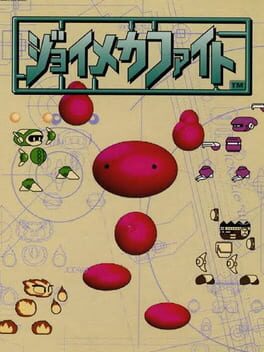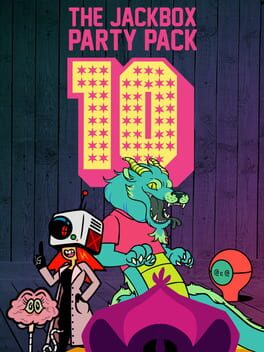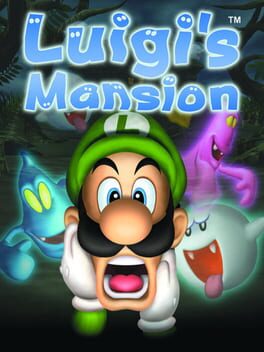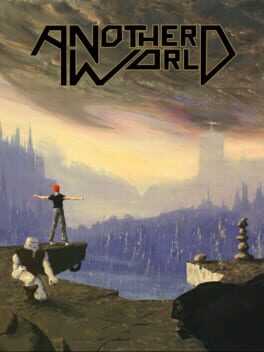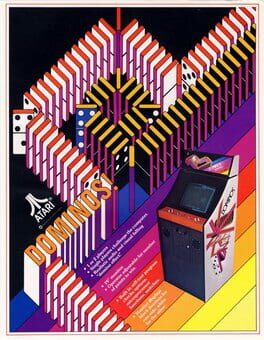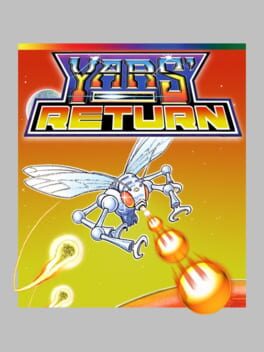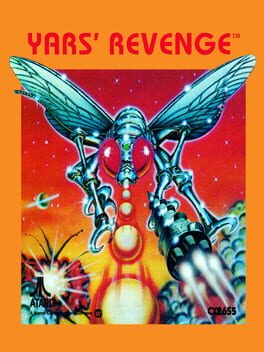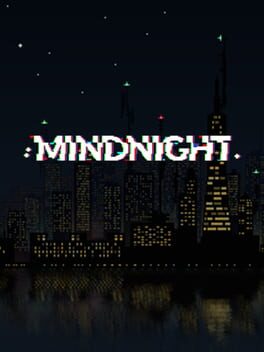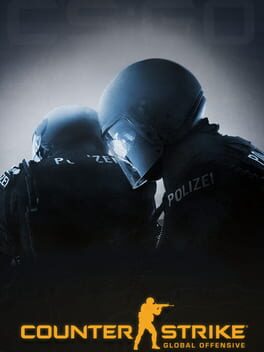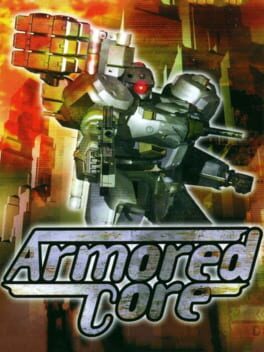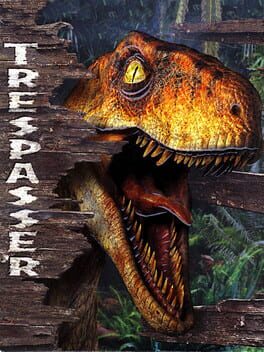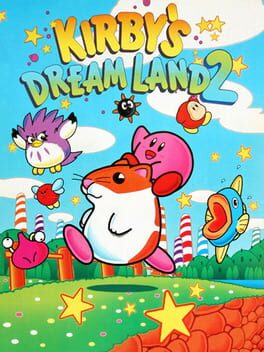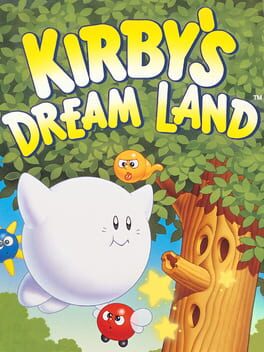Chariot_Rider
2020
This is a subpar party game. For text based games your character count is puny and often got in the way of jokes, even for sentences of reasonable length. Drawing stuff with friends is still fun, but that is true for all party games with drawing components so that doesn't set this apart. Gartic Phone can still be fun, but there are much better options for party games.
1993
Joy Mech Fight is a cute time. I haven’t played a ton of fighting games, but this was mostly enjoyable. The controls are simple, but I definitely grew to understand them a lot more by the end of the game, which is a sign of depth. As you play through the game, you begin to pick up on the differences between all 8 of your fighters and where they excel and where they don’t, so sometimes you can beat a tricky fight by finding a better robot for the job, almost like mega man. One thing I’m not huge on is the wide difficulty range from the start to the end. This game starts off very easy, but by the end of the game characters became incredibly difficult and I had to attempt them multiple times to progress which really dragged down the pace of an otherwise brisk experience.
Joy Mech Fight might be one of the best looking Famicom games. The backgrounds especially are gorgeous displays full of life. Fighting on the moon with the earth in the background and 3 parallax layers of craters, it’s a great spectacle to cap off a game of other beautiful arenas. The character design is also quite interesting. Without arms, the mechs can have very fluid motion, and their cartoony presentation is fun.
I apologize if this review isn’t up to my usual standards. I’m up quite late writing jt because I want the game fresh on my mind when I write this so I’m writing this piece dead tired.
Joy Mech Fight might be one of the best looking Famicom games. The backgrounds especially are gorgeous displays full of life. Fighting on the moon with the earth in the background and 3 parallax layers of craters, it’s a great spectacle to cap off a game of other beautiful arenas. The character design is also quite interesting. Without arms, the mechs can have very fluid motion, and their cartoony presentation is fun.
I apologize if this review isn’t up to my usual standards. I’m up quite late writing jt because I want the game fresh on my mind when I write this so I’m writing this piece dead tired.
Jackbox 10 is a good time. Like many of the packs there are some pretty good games and others that aren't and I'll give my general thoughts on each below
TeeKO 2
Its like TeeKO 1 but with a few slight changes, which is to say its very good. The drawings and shirts are hilarious and its always fun to see what people cook up
FixyText
My least favorite from the pack. The pacing on this is slow and you will spend a lot of time doing nothing. Even when you are typing, having three people type one prompt doesn't lead to comedy because the final result has no focus. This game feels like it drags the most.
Hypnotorious
This is an interesting social deduction game of trying to find those similar to you while giving hints that let others know what you are. It is a bit confusing at first, but it is interesting once you figure things out
Timejinx
An extremely clever trivia game. The idea of guessing dates and scoring points based on how far you are from the right date (with golf scoring) is brilliant and makes this a great trivia game with a unique twist.
Dodo Re Mi
A cooperative rhythm game. This is an interesting experiment, though the controls for keyboard and mouse users are a bit clunky. The different instruments offer an interesting choice for people on the outset and is an interesting way of changing difficulty.
Overall, I think Jackbox 10 is a fairly solid time. There is only one game I outright dislike, and the others, especially TeeKO 2 can be extremely fun. That being said, I'm not sure the collective package reaches above some of the other Jackbox games I have played
TeeKO 2
Its like TeeKO 1 but with a few slight changes, which is to say its very good. The drawings and shirts are hilarious and its always fun to see what people cook up
FixyText
My least favorite from the pack. The pacing on this is slow and you will spend a lot of time doing nothing. Even when you are typing, having three people type one prompt doesn't lead to comedy because the final result has no focus. This game feels like it drags the most.
Hypnotorious
This is an interesting social deduction game of trying to find those similar to you while giving hints that let others know what you are. It is a bit confusing at first, but it is interesting once you figure things out
Timejinx
An extremely clever trivia game. The idea of guessing dates and scoring points based on how far you are from the right date (with golf scoring) is brilliant and makes this a great trivia game with a unique twist.
Dodo Re Mi
A cooperative rhythm game. This is an interesting experiment, though the controls for keyboard and mouse users are a bit clunky. The different instruments offer an interesting choice for people on the outset and is an interesting way of changing difficulty.
Overall, I think Jackbox 10 is a fairly solid time. There is only one game I outright dislike, and the others, especially TeeKO 2 can be extremely fun. That being said, I'm not sure the collective package reaches above some of the other Jackbox games I have played
2001
I went into Luigi's Mansion expecting to enjoy it, but ultimately I found the experience to be tedious and dull. Fundimentally, Luigi's Mansion is doing the same thing over and over again with very little to shake things up. Ultimately, while ghost sucking had the potential to be enjoyable, it's not especially deep and doesn't drastically change much from ghost to ghost. Sucking up one ghost will feel the same as sucking up another ghost, so when the game stretches that one activity across a whole game. At points the game is comically lengthened, such as when you clear a room in the attic, only to receive a key to the basement, only for that room to give you a key to another attic room. You just have to walk through the cleared out mansion several times to continue, and it's just a dull matter of holding down the analogue stick. And the boos add to the tedium even more! Not only do you have to run through the house again to get all 50, but when you start capturing them they will just run into the halls, and in some rooms this dance can be extended for absurd amounts of time. It's not fun, or interesting to catch boos, its just an exercise in tedium. Sure, the presentation is decent, and it has its charming moments, but ultimately Luigi's Mansion is too repetitive and tedious for me to want to revisit it.
1991
Another World holds up, even in 2023. I was blown away by the games opening, with its well composed animated scenes, rotoscoping, and hefty sound effects that drive home the squeal of a car's wheels, the gentle hum of computers, and the sudden crack of lightning. This other world is sold with its careful pairing of music and visuals, with shots drawn from cinematic technique.
Everything after this cutscene still amazes. There are no words you can understand in Another World, with the story instead being carried by art direction. There's a clarity to every screen, at least with regards to everything important. The path forward isn't obstructed with visual clutter, and important gameplay factors are well telegraphed. Wires visually die out when disconnected. The red shields stand out against the dark purple backgrounds, and even indicate how long they have left with the fullness of their pixels, communicating very important information quickly.
The gameplay of Another World will see players dying repeatedly in incredibly strict platforming challenges and demanding combat encounters. At points it admittedly could be a bit much. Dying several times in a row because I missed a jump brought the pace down a bit, but the game never reached a depth of tedium that made me want to abandon the game. There is the occasional bit of moon logic in Another World, because it is still a narrative game from the 90s. One example is the puzzle where you have to threaten an alien who is trapped in a room with you, which for some reason closes a door upstairs? I couldn't figure out what the link between the two was, and I ultimately discovered it through trial and error. Fortunately, most puzzles make logical sense, even if it takes awhile to figure out. The puzzles actually can be quite clever at times, asking the player to use real world logic to solve these video game puzzles, which isn't something games always test. As an example, there is one puzzle where you have to drop a ball onto a guard to progress. I couldn't figure out how to time the drop but I got it out of sheer luck. When watching my footage back I realized that you were supposed to look at the reflection in the glass to realize when the guard was under the ball. It's extremely clever to ask a player to use reflection, and makes this world feel like its not just a string of convenient video game puzzles all strung together conveniently with the connecting framework of mechanics.
Another World transcends time. It was great back when it released, and it is just as great today. Unlike many classic games where I have to approach it with the tech and limitations in mind, I just can appreciate Another World as it is. It's stunning vistas, charming architecture, and intriguing world make this an unforgettable experience.
Everything after this cutscene still amazes. There are no words you can understand in Another World, with the story instead being carried by art direction. There's a clarity to every screen, at least with regards to everything important. The path forward isn't obstructed with visual clutter, and important gameplay factors are well telegraphed. Wires visually die out when disconnected. The red shields stand out against the dark purple backgrounds, and even indicate how long they have left with the fullness of their pixels, communicating very important information quickly.
The gameplay of Another World will see players dying repeatedly in incredibly strict platforming challenges and demanding combat encounters. At points it admittedly could be a bit much. Dying several times in a row because I missed a jump brought the pace down a bit, but the game never reached a depth of tedium that made me want to abandon the game. There is the occasional bit of moon logic in Another World, because it is still a narrative game from the 90s. One example is the puzzle where you have to threaten an alien who is trapped in a room with you, which for some reason closes a door upstairs? I couldn't figure out what the link between the two was, and I ultimately discovered it through trial and error. Fortunately, most puzzles make logical sense, even if it takes awhile to figure out. The puzzles actually can be quite clever at times, asking the player to use real world logic to solve these video game puzzles, which isn't something games always test. As an example, there is one puzzle where you have to drop a ball onto a guard to progress. I couldn't figure out how to time the drop but I got it out of sheer luck. When watching my footage back I realized that you were supposed to look at the reflection in the glass to realize when the guard was under the ball. It's extremely clever to ask a player to use reflection, and makes this world feel like its not just a string of convenient video game puzzles all strung together conveniently with the connecting framework of mechanics.
Another World transcends time. It was great back when it released, and it is just as great today. Unlike many classic games where I have to approach it with the tech and limitations in mind, I just can appreciate Another World as it is. It's stunning vistas, charming architecture, and intriguing world make this an unforgettable experience.
1977
This is Tron but not as snazzy. Honestly, the domino aesthetic is cute and watching everything fall over at the end is fun. The clack of the dominos is satisfying. However, the AI just isn't very good and beating the AI is quite trivial. Perhaps this is more engaging against a real human. But, for being such an old game, it's neat, but not an arcade game I feel any draw to return to.
2005
So, I think this is the correct game, but just to be clear, I am reviewing the version of Yars' Revenge from the Atari Vault collection on Steam. It has a different box art and is listed as a 2600 game.
A lot of what I have to say about Yars' Return is the same as my Revenge review so check that out if you are interested. However, I don't find Yars' Return nearly as strong as Revenge because of the change of level layout. Return is such a tedious game. On the levels where you have a block to shoot through, it takes ages to beat. Usually its not hard to dodge the projectiles, but it takes ages to tediously blast through all of the blocks to land your shot. This applies as the game gets harder. You have a bit less wiggle room, but fundamentally its the same pattern of going back and forth to finish off the center. The original is simple, and that worked in its favor. This just gets tedious and clunky and I would recommend the original over this any day.
A lot of what I have to say about Yars' Return is the same as my Revenge review so check that out if you are interested. However, I don't find Yars' Return nearly as strong as Revenge because of the change of level layout. Return is such a tedious game. On the levels where you have a block to shoot through, it takes ages to beat. Usually its not hard to dodge the projectiles, but it takes ages to tediously blast through all of the blocks to land your shot. This applies as the game gets harder. You have a bit less wiggle room, but fundamentally its the same pattern of going back and forth to finish off the center. The original is simple, and that worked in its favor. This just gets tedious and clunky and I would recommend the original over this any day.
1982
Yars Revenge is an interesting historical oddity that is definitely worth a bit of time. This might be one of the most visually stunning games on the Atari 2600. On a system where characters are often just a square, and other items are blocky, Yars' Revenge feels abstract in a way that evokes surreality. The central color pillar is a flowing rainbow of color shifting through hues. I don't entirely know what it is supposed to be, but it looks very cool. Likewise, when the base explodes, the screen becomes awash in triumphant color.
Yars' Revenge certainly feels unintuitive. I can pick up and play many shmups and generally get how it works very fast, this is a game that took awhile to figure out. Flying into enemies is usually death in games, but maybe back in 1982 that wasn't as ingrained in players. Perhaps in that regard this game has been hurt by the passing of time.
Even if you know how the game works, Yars has problems. There are two levels the game cycles through, and while these add variety, the levels don't feel nearly as varied as modern offerings, or even games that would come out a few years later. The game does get harder over time because the chaser missile gets faster, but that's the main difficulty spike. Perhaps it is unfair to compare Yars to later games in that department because it is on such limited hardware, but other space shooters get harder by throwing in more obstacles and enemies, or harder enemies, and it lets those games feel much better paced.
Yars' Revenge is a graphically impressive game for its system, and even separated from its limitation and taken purely on its own merits it still looks great. It's easy to see why this game made such a strong impression, because nothing looked quite like it. Even the MOMA recognized this game's value today and included it in its collection. It's worth a play, if only because it's short and you can get the gist quickly, and its historically important and visually iconic.
Yars' Revenge certainly feels unintuitive. I can pick up and play many shmups and generally get how it works very fast, this is a game that took awhile to figure out. Flying into enemies is usually death in games, but maybe back in 1982 that wasn't as ingrained in players. Perhaps in that regard this game has been hurt by the passing of time.
Even if you know how the game works, Yars has problems. There are two levels the game cycles through, and while these add variety, the levels don't feel nearly as varied as modern offerings, or even games that would come out a few years later. The game does get harder over time because the chaser missile gets faster, but that's the main difficulty spike. Perhaps it is unfair to compare Yars to later games in that department because it is on such limited hardware, but other space shooters get harder by throwing in more obstacles and enemies, or harder enemies, and it lets those games feel much better paced.
Yars' Revenge is a graphically impressive game for its system, and even separated from its limitation and taken purely on its own merits it still looks great. It's easy to see why this game made such a strong impression, because nothing looked quite like it. Even the MOMA recognized this game's value today and included it in its collection. It's worth a play, if only because it's short and you can get the gist quickly, and its historically important and visually iconic.
2017
Mindnight is a fun social deduction game with friends. It's incredibly simple, but can lead to interesting social moments. It's structurally quite similar to Secret Hitler where multiple policies have to be enacted for either team to win, which to a certain extent works against this game. Mindnight is incredibly mechanically simple, but that also means that in comparison to other social deduction games it doesn't offer as much to go on when making decisions. As a result, the first voting round almost always plays out the same, and as a result games take awhile to get going, where as other social deduction games get to the scheming and accusation much faster. It's a solid time, but I would definitely choose a social deduction games that is slightly more mechanically dense with a few more things going on over this.
The UI is also not entirely ideal. The game opens with a tutorial movie which works but feels a bit odd, and the UI feels cluttered with a mictrotransaction store and oddness in the server setup. A decent amount of the playtime I have in this game was spent not realizing that the host had to press a button, even though everyone had readied, or it took awhile to learn how to equip a skin, and overall the UI felt a bit lacking. Functional, but with enough small hiccups to be noticeable. However this is worth checking out with some friends for a night.
The UI is also not entirely ideal. The game opens with a tutorial movie which works but feels a bit odd, and the UI feels cluttered with a mictrotransaction store and oddness in the server setup. A decent amount of the playtime I have in this game was spent not realizing that the host had to press a button, even though everyone had readied, or it took awhile to learn how to equip a skin, and overall the UI felt a bit lacking. Functional, but with enough small hiccups to be noticeable. However this is worth checking out with some friends for a night.
I have complicated feelings about Counter Strike Global Offensive because on the one hand, I think it's mechanics are brilliant. It is an extremely well designed, strategic shooter. Matches can have a ton of strategy, prediction, and generally trying to out think and out flank your opponent. This partially comes down to how lethal this game is. Counter Strike kills you incredibly quickly, so it is usually the person who sees their opponent first that wins. As such, positioning and flanking are really important, as is thinking about how your opponent might approach a situation. It's incredibly satisfying, and is one of the most strategic shooters I have ever played. However, actually playing Counter Strike Global Offensive could be an incredibly mixed bag because of the online experience. If you mess up, opponents are likely to yell at you. I have been called an NPC and an AI for making mistakes, as all beginners to a game do. I've had people report my account after some bad plays. Playing Counter Strike can be so stressful because you feel a need to perform well so your team doesn't get mad. With friends this problem can be solved, but finding 4 other people of roughly the same skill level that want to play this is tricky.
Ultimately, I could give a deeper review if I had more time with the game, but unfortunately Counter Strike Global Offensive has been delisted because of the release of Counter Strike 2. This is an incredibly sad and worrying move on Valve's end, and I hope for legacy and preservation's sake it is returned to steam alongside its sequel. Ultimately, Counter Strike is a great game whose competitive community takes it so seriously that it harms my enjoyment.
Ultimately, I could give a deeper review if I had more time with the game, but unfortunately Counter Strike Global Offensive has been delisted because of the release of Counter Strike 2. This is an incredibly sad and worrying move on Valve's end, and I hope for legacy and preservation's sake it is returned to steam alongside its sequel. Ultimately, Counter Strike is a great game whose competitive community takes it so seriously that it harms my enjoyment.
1997
I love Armored Core. This game has the trappings of a fascinating action game. It is clunky, but it could easily be argued that its clunk is often the point. Armored Core wants to sell you on the fact that piloting a huge war machine is actually pretty sluggish and clunky, and it succeeds at this while also improving over the course of the game. As you buy new parts, old annoying aspects of control fade away and your machine feels more modern and powerful.
The progression in this game is noteworthy. In between missions you can buy items at a shop, but this isn't a simply case of buying the best item with the best stats because everything has tradeoffs. Having heavy armor or lots of guns will make your vehicle overweight. This can be overcome by having more powerful legs, but these use more energy so you would need a better generator and the bigger generator will be heavier and at that point maybe its worth looking at a different kind of gun that's potentially lighter to do the job. There is a lot to consider when building your mech, and this makes the choice of how to build incredibly meaningful. There are some missions where certain loadouts are better, and you often have to figure out what the optimal loadout will be based on a description alone. This makes a first time run incredibly tense because you don't know what will in store for you, especially because missions will often throw in unexpected surprises into missions. These surprises are fascinating in the sense that AC is such a plan heavy game. I spend a long time planning my mech and optimizing its approach to suit different missions, but these surprises can counter planning to a certain extent and force you to always anticipate unknown threats. One downside of this is that repeat playthroughs can't quite carry the same level of surprise, and the game becomes a lot easier and loses the surprise that keeps you on the tips of your toes.
Armored Core's mission design does a lot for the game. Each mission presents a unique obstacle to the player and each stands on their own. Overall, I like the missions, though there are some that clearly stand out over the others. In particular, the game's final mission is genuinely awful, and is a greater drop in quality than Xen was for Half Life.
Overall, Armored Core is an excellent action game. It's controls are clunky, but that's fitting for the sort of experience the game is going for and only rarely detracts from the experience. It's economic themes pair well with the game's writing, creating an effective critique of capitalism with only a few simple elements
The progression in this game is noteworthy. In between missions you can buy items at a shop, but this isn't a simply case of buying the best item with the best stats because everything has tradeoffs. Having heavy armor or lots of guns will make your vehicle overweight. This can be overcome by having more powerful legs, but these use more energy so you would need a better generator and the bigger generator will be heavier and at that point maybe its worth looking at a different kind of gun that's potentially lighter to do the job. There is a lot to consider when building your mech, and this makes the choice of how to build incredibly meaningful. There are some missions where certain loadouts are better, and you often have to figure out what the optimal loadout will be based on a description alone. This makes a first time run incredibly tense because you don't know what will in store for you, especially because missions will often throw in unexpected surprises into missions. These surprises are fascinating in the sense that AC is such a plan heavy game. I spend a long time planning my mech and optimizing its approach to suit different missions, but these surprises can counter planning to a certain extent and force you to always anticipate unknown threats. One downside of this is that repeat playthroughs can't quite carry the same level of surprise, and the game becomes a lot easier and loses the surprise that keeps you on the tips of your toes.
Armored Core's mission design does a lot for the game. Each mission presents a unique obstacle to the player and each stands on their own. Overall, I like the missions, though there are some that clearly stand out over the others. In particular, the game's final mission is genuinely awful, and is a greater drop in quality than Xen was for Half Life.
Overall, Armored Core is an excellent action game. It's controls are clunky, but that's fitting for the sort of experience the game is going for and only rarely detracts from the experience. It's economic themes pair well with the game's writing, creating an effective critique of capitalism with only a few simple elements
1998
Trespasser is a fascinating oddity. Ultimately, I have a lot of respect for its ambition, even if its execution leaves a lot to be desired. Even to this day, there isn't all that much quite like Trespasser, and there are definitely reasons for that.
It's controls are pretty sluggish, which isn't inherently a bad thing. Your floppy noodle arm makes it trickier to line up shots, which makes charging dinos a lot more threatening than they would be with a standard "crosshair at the center of the screen" sort of aiming. There's a certain tactility to the shooting in Trespasser that really is only rivaled by VR shooters.
The level design aims for realism, often at the expense of fun, and even then some of its levels feels incredibly goofy. The huge map is certainly reflective of an actual island's size, but with your slow walking speed it becomes quite a chore to traverse. That isn't to say that the realism doesn't have its benefits, but the game's systems make those harder to appreciate.
The game's puzzles are baffling at times. None of them are especially difficult, and often it feels like they are less puzzles and more a demonstration of the game's novel physics engine. This is best epitomized by a puzzle at the end of the game with a lever that raises an elevator. You can't press that lever while on the elevator, but there is a really convenient plank of wood waiting to be shot over onto the button. It feels incredibly gamey, like the designer's hand is guiding you to its solution in a way that clashes with the game's aspirations for a realistic, seamless world. This applies to pretty much every puzzle in the game.
Trespasser is a game pulled both in a very gamey and realistic direction in a way that led to a tonally odd game. Nonetheless, no game from the time really tried many of the things Trespasser did, and in that regard it died a pioneers death. This game has physics puzzles that weren't ideal, but it was doing them years before Half Life 2. It has realistic jungles years before Crysis. It achieved a hudless UI, in an admittedly pretty tacky and infamous way. One could easily criticize those aspects of the game, but I also feel it earns a lot of grace purely for the size of its ambition. It's actually an incredibly fascinating time to play, and while I can't really call it a "great" game in the way I might something like Rain World, that shouldn't diminish the value of this game, nor should it even necessarily dissuade anyone else from giving it a try.
It's controls are pretty sluggish, which isn't inherently a bad thing. Your floppy noodle arm makes it trickier to line up shots, which makes charging dinos a lot more threatening than they would be with a standard "crosshair at the center of the screen" sort of aiming. There's a certain tactility to the shooting in Trespasser that really is only rivaled by VR shooters.
The level design aims for realism, often at the expense of fun, and even then some of its levels feels incredibly goofy. The huge map is certainly reflective of an actual island's size, but with your slow walking speed it becomes quite a chore to traverse. That isn't to say that the realism doesn't have its benefits, but the game's systems make those harder to appreciate.
The game's puzzles are baffling at times. None of them are especially difficult, and often it feels like they are less puzzles and more a demonstration of the game's novel physics engine. This is best epitomized by a puzzle at the end of the game with a lever that raises an elevator. You can't press that lever while on the elevator, but there is a really convenient plank of wood waiting to be shot over onto the button. It feels incredibly gamey, like the designer's hand is guiding you to its solution in a way that clashes with the game's aspirations for a realistic, seamless world. This applies to pretty much every puzzle in the game.
Trespasser is a game pulled both in a very gamey and realistic direction in a way that led to a tonally odd game. Nonetheless, no game from the time really tried many of the things Trespasser did, and in that regard it died a pioneers death. This game has physics puzzles that weren't ideal, but it was doing them years before Half Life 2. It has realistic jungles years before Crysis. It achieved a hudless UI, in an admittedly pretty tacky and infamous way. One could easily criticize those aspects of the game, but I also feel it earns a lot of grace purely for the size of its ambition. It's actually an incredibly fascinating time to play, and while I can't really call it a "great" game in the way I might something like Rain World, that shouldn't diminish the value of this game, nor should it even necessarily dissuade anyone else from giving it a try.
1995
It is astounding how much of an improvement Kirby's Dream Land is to its prequel. DL1 is a perfectly serviceable platformer, but 2 has so much more identity. The introduction of copy abilities alone does a lot to make Kirby's gameplay much more interesting. With copy abilities, I found myself considering what would be best to carry forward to other parts of the game, giving a lot more moment to moment decision making that simply wasn't present in the more reactive gameplay of 1.
Alongside copies, the level design has also largely improved. There are still some levels that lack identity, but there are more memorable moments on offer here. Levels like the maze filled with crumbling cloud blocks was a real highlight. However, where 2's levels reach a more iconic high, it also has its mean moments. One standout level is an autoscroller where you have to guess what path is correct, and if you are wrong you die. As far as I could tell, there was no pattern to discerning the "correct" path. Autoscrollers in general were responsible for a decent amount of unfair moments in this game, though sometimes it gave levels a bit of spice.
I like the star life system. While lives aren't all that meaningful if you just want to beat the game since you can use as many continues as you want, for those dedicated to a 1 credit clear they add a lot to the levels. Stars are sometimes used as rewards for explorative players or for holding onto upgrades past a difficult section.
The animal buddies are fun too. They're the best example of how much cuter this game looks than its predecessor. It's very pretty. Mechanically, the animal friends are fun and combining them with copy abilities gave me some interesting experimentation. The bird is easily the best, where as the fish was a lot more situational. Holding onto them as long as possible was a fun challenge.
Bosses in this game were generally better too. The ice block guy was trivially easy, but everyone else felt like they posed a threat while also not being overly tedious to fight. The Dedede fight is quite similar to the first game, but a few changes make it a lot less of a waiting game, and it is instead a bloodbath. I probably died the most at Dedede than I did anywhere else. That being said, his anger causing him to throw out more stars that are riskier to collect is an inspired change that I appreciate after the boring drawn out fight of the first game.
Overall, these changes cumulatively create a much more engaging and memorable experience than its predecessor.
Alongside copies, the level design has also largely improved. There are still some levels that lack identity, but there are more memorable moments on offer here. Levels like the maze filled with crumbling cloud blocks was a real highlight. However, where 2's levels reach a more iconic high, it also has its mean moments. One standout level is an autoscroller where you have to guess what path is correct, and if you are wrong you die. As far as I could tell, there was no pattern to discerning the "correct" path. Autoscrollers in general were responsible for a decent amount of unfair moments in this game, though sometimes it gave levels a bit of spice.
I like the star life system. While lives aren't all that meaningful if you just want to beat the game since you can use as many continues as you want, for those dedicated to a 1 credit clear they add a lot to the levels. Stars are sometimes used as rewards for explorative players or for holding onto upgrades past a difficult section.
The animal buddies are fun too. They're the best example of how much cuter this game looks than its predecessor. It's very pretty. Mechanically, the animal friends are fun and combining them with copy abilities gave me some interesting experimentation. The bird is easily the best, where as the fish was a lot more situational. Holding onto them as long as possible was a fun challenge.
Bosses in this game were generally better too. The ice block guy was trivially easy, but everyone else felt like they posed a threat while also not being overly tedious to fight. The Dedede fight is quite similar to the first game, but a few changes make it a lot less of a waiting game, and it is instead a bloodbath. I probably died the most at Dedede than I did anywhere else. That being said, his anger causing him to throw out more stars that are riskier to collect is an inspired change that I appreciate after the boring drawn out fight of the first game.
Overall, these changes cumulatively create a much more engaging and memorable experience than its predecessor.
1992
Kirby’s Dream Land is short enough that it doesn’t overstay it’s welcome. It’s cute and has some charming character designs which help elevate it above other platformers of a similar caliber. While some enemies didn’t stand out all that much, I others were set apart by simply and unique changes, like not being able to be sucked up or having a weird movement pattern.
Kirby is known as an east series, and to an extent it is. The first few levels don’t put up that much resistance, but that’s typical of almost platformers. However the later levels have enough tricks that you have to stay on your toes, even if just a bit. It’s not mindless. In fact, by the end of the game I had to use a continue in the final boss rush.
The Dedexe fight was a bit annoying. I am not sure if there are other ways of damaging him, but I could only damage him by sucking up stars, which he only releases with two attacks. One of them backs you into a corner and can easily do damage, and the other is a big jump that releases stars. That’s the only move I could consistently damage him with, but it’s all up to luck if he’s going to throw it. He could throw out out 3 times in a row, or wait 30 seconds. It made the final boss boring because I spent most of my time waiting. It’s trivial to dodge the other attacks, so it was just me waiting for him to get his stuff over with so I could move on.
Overall, it’s a solid time. It’s worth an hour to play through it at least once. I also appreciate the harder bonus game, but it’s boss design is pretty rough so I didn’t get too far into it, but for big Kirby fans it’s nice to have.
Kirby is known as an east series, and to an extent it is. The first few levels don’t put up that much resistance, but that’s typical of almost platformers. However the later levels have enough tricks that you have to stay on your toes, even if just a bit. It’s not mindless. In fact, by the end of the game I had to use a continue in the final boss rush.
The Dedexe fight was a bit annoying. I am not sure if there are other ways of damaging him, but I could only damage him by sucking up stars, which he only releases with two attacks. One of them backs you into a corner and can easily do damage, and the other is a big jump that releases stars. That’s the only move I could consistently damage him with, but it’s all up to luck if he’s going to throw it. He could throw out out 3 times in a row, or wait 30 seconds. It made the final boss boring because I spent most of my time waiting. It’s trivial to dodge the other attacks, so it was just me waiting for him to get his stuff over with so I could move on.
Overall, it’s a solid time. It’s worth an hour to play through it at least once. I also appreciate the harder bonus game, but it’s boss design is pretty rough so I didn’t get too far into it, but for big Kirby fans it’s nice to have.
1993
It's easy to understand why Doom became such an influential and iconic game. It's action holds up decades later, and its visuals have aged gracefully into being cartoony fun. Its first episodes are a great opening for what Doom can be, with a good mix of action packed tech bases and puzzle hunts, however I feel that Doom is held back by its later episodes which become a lot more gimmicky, brutal, or sloggish. Some levels in later episodes would leave me wandering for ages. I had killed all of the demons, but because I couldn't pin down some obtuse and poorly hidden key, I was stuck. However, these episodes can only hold Doom back so much, and overall the game outshines it weaker moments, laying out an iconic groundwork for future games and modders to play with.

